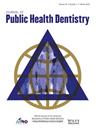To assess disparities in preventive dental service use in four major racial/ethnic groups and assess whether racial/ethnic and income-related disparities among children were reduced from 2016 to 2020.
Data were from the 2016 and 2020 National Survey of Children's Health (NSCH). The outcomes of interest were having dental sealants, fluoride treatment, and dental caries in the past 12 months. Racial/ethnic groups included non-Hispanic (NH) whites, blacks, Hispanics, Asians, and others. Family income level was categorized as below or above the 200% federal poverty level (low-income vs. high-income). Children ages 2–17 were included (N = 161,539). All data were self-reported by parents/guardians. We estimated the trends of racial/ethnic disparities in having fluoride treatment, dental sealants, and dental caries from 2016 to 2020 and tested two 2-way interactions (i.e., year by race/ethnicity, year by income) and one 3-way interaction (year by income by race/ethnicity) to assess the change in disparities from 2016 to 2020.
Overall, no significant trends in receipt of fluoride treatment, dental sealants, or having dental caries were found from 2016 to 2020 among the racial/ethnic groups, except for a decreasing trend in dental sealants for Asian American children (p = 0.03). Overall, NH white children were more likely to have received preventive dental services than children from minority groups (all p < 0.05); Asian American children (AOR = 1.31) were more likely to have dental caries than NH white children.
Disparities in receipt of evidence-based preventive services by children persisted. Continuous efforts are needed to promote the use of preventive dental services among children of minority populations.


